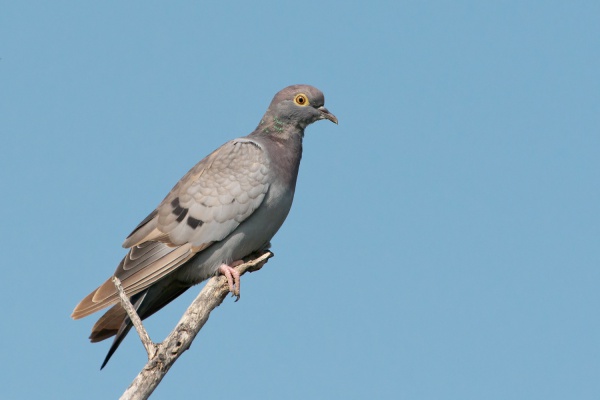Facts About Yellow-eyed pigeon
The yellow-eyed pigeon, also known as the pale-backed pigeon, is a captivating bird that belongs to the Columbidae family. It resides in southern Kazakhstan, Uzbekistan, Turkmenistan, Tajikistan, Kyrgyzstan, Afghanistan, northeast Iran, and northwest China during the breeding season. In winter, it migrates to northeast Pakistan, Jammu and Kashmir, and parts of Rajasthan.
Regrettably, this enchanting bird is experiencing a decline in population, primarily due to hunting, and is currently classified as “vulnerable” by the International Union for Conservation of Nature (IUCN).
First described in 1856 by French ornithologist Charles Lucien Bonaparte, the yellow-eyed pigeon received its scientific name in honor of German biologist Eduard Friedrich Eversmann. This medium-sized bird is predominantly grey with a pinkish-purple sheen on its crown, throat, and breast. It also features a black bar on its wing and has a striking yellow iris. Although it can be confused with the rock dove or the hill pigeon, it possesses distinct characteristics that differentiate it from these species.
The yellow-eyed pigeon favors steppes and lowland areas for breeding, while in winter, it inhabits agricultural regions and orchards. Its diet mainly consists of seeds, grains, and berries, which it forages for on the ground, occasionally plucking fruits directly from plants.
As the autumn season approaches, these pigeons migrate south, forming flocks to roost in trees during the winter. Nesting typically occurs in late spring and summer, with nests often constructed on cliffs, in hollow trees, or within the ruins of old buildings.
Unfortunately, the population of the yellow-eyed pigeon has experienced a significant decline over the years due to hunting. Once abundant, these birds are now observed in much smaller flocks, often consisting of only a few dozen individuals. Consequently, conservation efforts are crucial to prevent further decline and to ensure the survival of this species.

 Kyrgyzstan
Kyrgyzstan